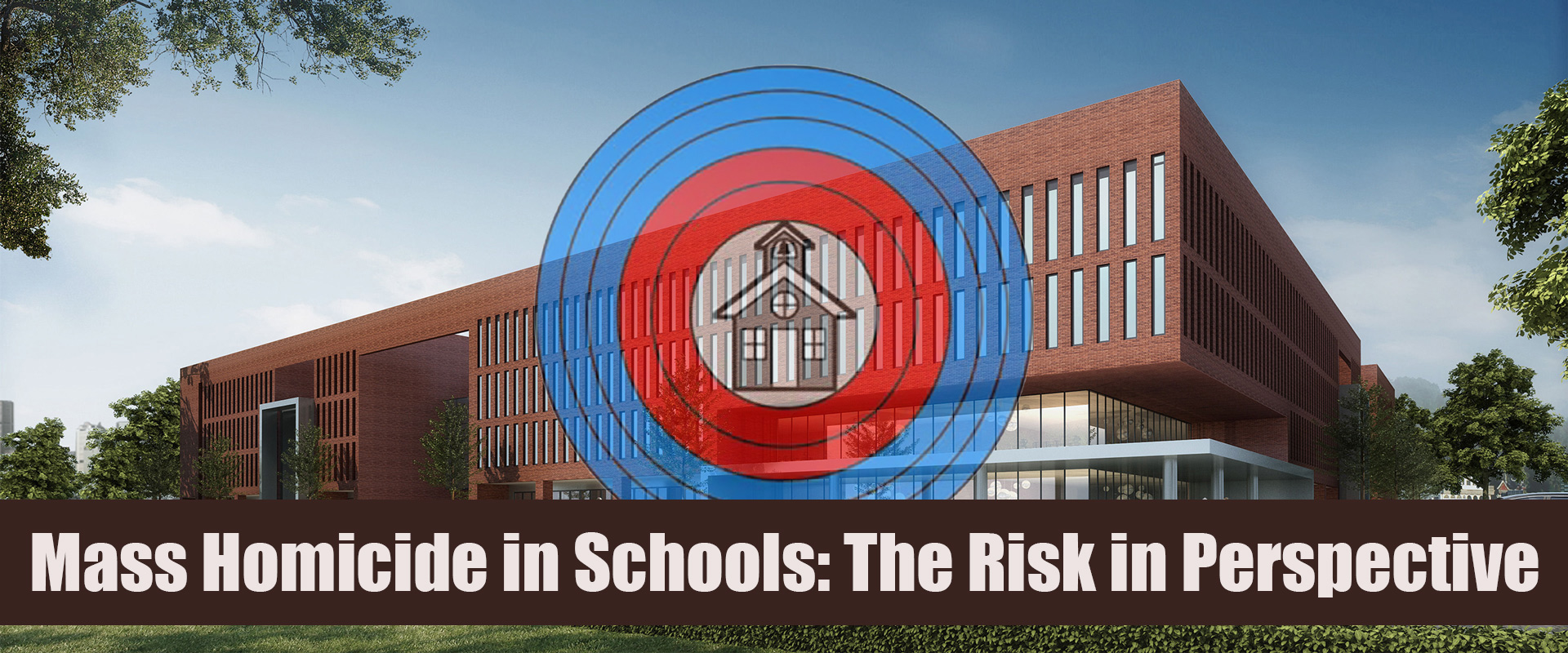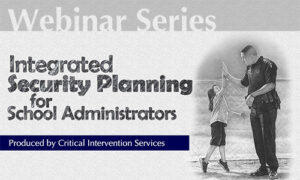
Barrier Delay Measures and The Double Edged Sword
While assisting a reporter after the Uvalde shooting, a question was posed that maybe warrants some discussion. During the interview, I described some examples of
The Critical Difference™
Since the inception of the Guardian SafeSchool Program®, our consultant team has assisted a diverse range of schools in developing improved emergency response plans and infrastructure necessary for effective performance during crisis events.
Although each emergency planning project is unique, all proceed through a sequence of three phases described as follows.
All emergency response planning projects commence with an assessment to familiarize our consultant with unique characteristics of the school, current emergency response preparations, and the status of existing infrastructure. During this stage, a physical assessment is conducted to assess the school’s emergency communications systems, egress design, refuge options for hazardous events, assembly areas, and additional issues.
Upon completion of the assessment, a summary report is presented to the school with recommended improvements essential for developing new emergency response plans and procedures.
After essential improvements have been identified and a plan for remedy is underway, our consultant works with the school’s leadership to author a new all-hazard Emergency Response Plan (or improvement of existing plans). Activities undertaken at this stage often include structuring the Emergency Response Team, defining authorities and responsibilities, designing improved processes for emergency communications, designating safety zones (e.g., assembly areas, shelter-in-place rooms, severe weather shelters, etc.) and authoring a system of event-specific emergency procedures for best performance, safety, clarity, and organization.
After all essential procedures are complete and ready for promulgation, our consultant support team designs a press-ready classroom flipchart customized according to the school’s emergency response plan.
Even the best designed plans and preparations will fail if school employees are unprepared to take action for their self-preservation and protection of students during emergency events. After the school’s essential policies and procedures are complete and approved, our consultant conducts live training classes to instruct faculty about new improvements in the school’s emergency response plan (e.g., emergency response team structure, communications systems, etc.) and critical protocols for major events such as active shooter situations, bomb threats, and school reunification. In middle schools and high schools, this training also encompasses a discussion about recognizing and reporting threats and behaviors of concern.
In addition to faculty training, a separate tabletop session is conducted to instruct emergency response team members on more complex details of the improved procedures and the role of specific team members.
In our work as consultants, we have assessed numerous emergency response plans developed by schools, districts, insurance companies, and others. Most plans we encounter suffer from problems including ambiguity, lack of redundancy, omission of critical protocols and safety measures, and even dangerous procedures that increase the risk of harm and liability if implemented as designed.
The school emergency response plans developed by our consultants are customized for the unique characteristics of each school, based on decades of experience managing emergencies and assessment of historical crisis events. Each plan we design is developed with careful attention to effectiveness, safety, and actionability under high-stress conditions.

Craig Gundry, PSP, cATO, FCP
Craig Gundry is a CIS security consultant and expert witness with over 30-years of specialized focus on active shooter violence, school security, and terrorism. As an expert specialized in managing risks of targeted violence, Craig assisted in the development of ASIS International’s new WVPI-2020/AA, Workplace Violence and Active Assailant – Prevention, Intervention, and Response Standard and the Guardian SafeSchool Program® standards for school security.
Craig provides expert commentary for national news organizations and is a columnist for Workplace Violence Today magazine. He is also a TEDx presenter and speaker at conferences worldwide on topics related to terrorism, school security, and workplace violence.
In addition to his role at CIS, Craig is also a lead instructor for the S2 Institute’s Anti-Terrorism Officer course and advanced seminars on security risk assessment, active shooter preparations, physical security, and emergency response planning. His previous students include over 5,000 security and public safety professionals from over 50 nations. He also lectures on security topics for John Jay College of Criminal Justice and presents PSP® exam preparation courses for ASIS International.

Hector Rodriguez, CPP, cATO, FCP
Hector is the Assistant Vice President of Special Projects and a staff consultant focusing on school security, workplace violence, and protection of houses of worship.
Mr. Rodriguez joined Critical Intervention Services in 2003 as a protection officer and progressively rose through the ranks serving in every leadership position until his promotion to Chief of Uniformed Services in 2012.
In 2019, Hector was promoted to Vice President of Protective Services and assumed responsibility for the operations of over 300 security officers, field supervisors, and operations center personnel. As the senior commander for our School Protection Officer division, Hector supervised the implementation of the Guardian SafeSchool Program at ten Tampa Area schools.
In 2022, Hector joined the CIS Special Projects Division as the Assistant Vice President of Special Projects.

Chad Clayton, CPP
Chad is a CIS school security consultant with over twenty-five years of security industry experience.
Chad is board-certified as a Certified Protection Professional (CPP) through ASIS International. He is also a 1993 graduate of Executive Security International’s Advanced Executive Protection program and has an Associate in Arts Degree . He is an N.R.A certified Law Enforcement and Security Firearms Instructor in handgun and shotgun disciplines. In addition, Chad has conducted a variety of investigations and has hundreds of hours of advanced training in violence assessment, prevention, management, interviewing, interrogation, technical surveillance countermeasures, defensive tactics, and Crime Prevention through Environmental Design.

While assisting a reporter after the Uvalde shooting, a question was posed that maybe warrants some discussion. During the interview, I described some examples of

One of the most common problems we encounter in our work as security consultants is the absence of safe rooms and secure classrooms capable of

When many people think of physical security, the first ideas that come to mind are things like locks, alarm systems, screening with metal detectors, CCTV,

When teaching security planning workshops for school leaders, I find it valuable to begin the presentation with a brief discussion to put the risk of

The following series of school security training videos is produced as a webinar edition of the one-day Integrated Security Planning for School Administrators (ISPSA) seminar

Effective school security plans begin with a strategy. To most, this sounds like an obvious point. However, some of the most common problems I encounter
Since 1993, our consultants have provided hundreds of interviews to news media organizations related to prevention and response to active shooter violence and school security topics.
Contact us to discuss your school’s needs by calling Tel. +01 (727) 461-9417 or by completing the following form:
Toll-free: (800) 247-6055 | Tampa Bay Area: (727) 461-9417 | Hillsborough: (813) 910-4247 | Orlando: (407) 420-7945

Critical Intervention Services
The Critical Difference™
The staff of CIS is dedicated to providing each client with the finest quality of protective services available.
Our commitment and dedication to professional, ethical, and protocol conscious service is our trademark.
Preserving, projecting, and protecting our clients’ image and interests is our business.
Copyright © 2020 Critical Intervention Services, Inc. ® Florida “A” License: A9900261 • Florida “B” License: B9200107